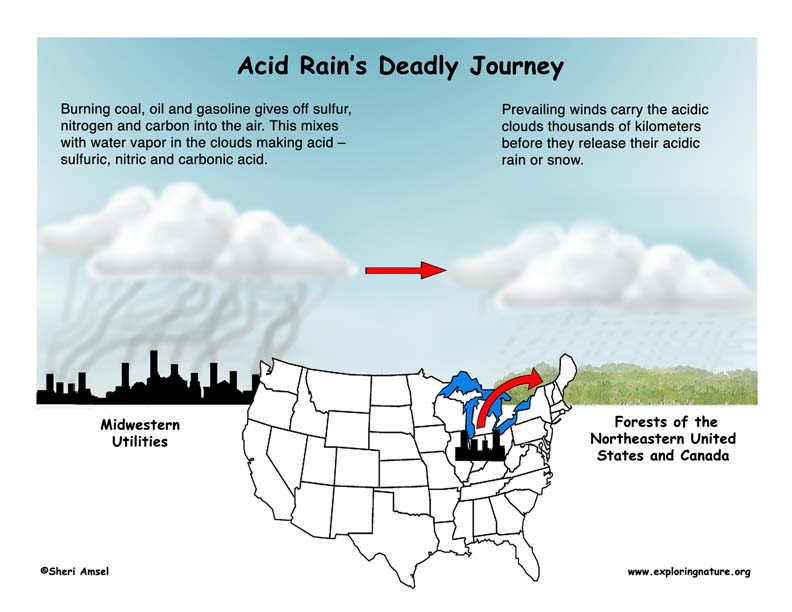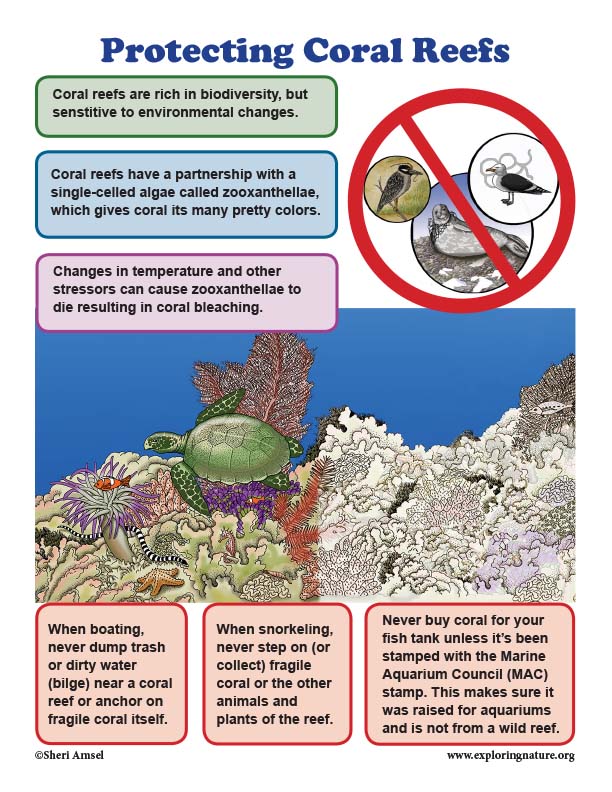

Disciplinary Core Ideas
LS2.C: Ecosystem Dynamics, Functioning, and Resilience
• Ecosystems are dynamic in nature; their characteristics can vary over time. Disruptions to any physical or biological component of an ecosystem can lead to shifts in all its populations. (MS-LS2-4)
• Biodiversity describes the variety of species found in Earth’s terrestrial and oceanic ecosystems. The completeness or integrity of an ecosystem’s biodiversity is often used as a measure of its health. (MS-LS2-5)
LS4.D: Biodiversity and Humans
• Changes in biodiversity can influence humans’ resources, such as food, energy, and medicines, as well as ecosystem services that humans rely on—for example, water purification and recycling. (secondary to MS-LS2-5)
ETS1.B: Developing Possible Solutions
• There are systematic processes for evaluating solutions with respect to how well they meet the criteria and constraints of a problem. (secondary to MS-LS2-5)
_________________________________________________________________________________________________________________________________________________________
Use Resource Links to Fulfill NGSS
l. Goals:
Essential Questions:
NGSS Note: Think, question, entertain ideas.
ll. Introductory Activities to Assess Prior Knowledge
A. Simple Activities - that assess students’ understanding ecosystem changes.
Ecosystem Changes - Define the Problem
Biodiversity and Housing Developments - Critical Thinking
B. Brainstorming Sessions
Question: What are some solutions to human made ecosystem issues like acid rain and coral reef destruction.
1. Break students down into groups of 3-4.
2. Ask students to research the problem, brainstorm potential solution, model build some designs, talk about testing.
3. Discuss
Finding Solutions to Human-made Acid Rain
Forest Fires and Animal Populations - Critical Thinking
lll. New Knowledge - Text
A. Read about biodiversity, Ecosystem Dynamics, Functioning, and Resilience:
Biodiversity and Humans - Reading
Our Fragile Coral Reefs
Forest Fires
Ecosystem Dynamics of Mangroves - Research and Discuss
Forest Succession
Changing Arctic Ecosystems - Performance Task
B. Examples of Models (depicts the concept expressed in the reading):
Ask students to look at the models and explain how each illustrates the concepts they've read about.
A. Inquiry related to above topics:
Finding Solutions to Humans Damaging Coral Reefs
Forest Succession Activity - Critical Thinking
B. Authentic Performance - Understanding by Design (UbD) assessment tool.
Use critical thinking to complete thse Authentic Performance Activities and deepen your understanding about the above topics.
Environmental Changes and Mangroves - Authentic Performance
Forest Succession - Authentic Performance Activity
Next Generation Science Standards (NGSS) - Middle School Life Science
Disciplinary Core Ideas
LS2.C: Ecosystem Dynamics, Functioning, and Resilience
• Ecosystems are dynamic in nature; their characteristics can vary over time. Disruptions to any physical or biological component of an ecosystem can lead to shifts in all its populations. (MS-LS2-4)
• Biodiversity describes the variety of species found in Earth’s terrestrial and oceanic ecosystems. The completeness or integrity of an ecosystem’s biodiversity is often used as a measure of its health. (MS-LS2-5)
LS4.D: Biodiversity and Humans
• Changes in biodiversity can influence humans’ resources, such as food, energy, and medicines, as well as ecosystem services that humans rely on—for example, water purification and recycling. (secondary to MS-LS2-5)
ETS1.B: Developing Possible Solutions
• There are systematic processes for evaluating solutions with respect to how well they meet the criteria and constraints of a problem. (secondary to MS-LS2-5)
Science and Engineering Practices (NGSS)
Developing and Using Models
Modeling in 6–8 builds on K–5 experiences and progresses to developing, using, and revising models to describe, test, and predict more abstract phenomena and design systems.
• Develop and use a model to describe phenomena. (MS-LS2-3)
Analyzing and Interpreting Data
•Analyzing data in 6–8 builds on K–5 experiences and progresses to extending quantitative analysis to investigations, distinguishing between correlation and causation, and basic statistical techniques of data and error analysis.
• Analyze and interpret data to provide evidence for phenomena. (MS-LS2-1)
Constructing Explanations and Designing Solutions
Constructing explanations and designing solutions in 6–8 builds on K–5 experiences and progresses to include constructing explanations and designing solutions supported by multiple sources of evidence consistent with scientific ideas, principles, and theories.
• Construct an explanation that includes qualitative or quantitative relationships between variables that predict phenomena. (MS-LS2-2)
Engaging in Argument from Evidence
Engaging in argument from evidence in 6–8 builds on K–5 experiences and progresses to constructing a convincing argument that supports or refutes claims for either explanations or solutions about the natural and designed world(s).
• Construct an oral and written argument supported by empirical evidence and scientific reasoning to support or refute an explanation or a model for a phenomenon or a solution to a problem. (MS-LS2-4)
• Evaluate competing design solutions based on jointly developed and agreed-upon design criteria. (MS-LS2-5)
Connections of Nature and Science
Scientific Knowledge is Based on Empirical Evidence
• Science disciplines share common rules of obtaining and evaluating empirical evidence. (MS-LS2-4)
Crosscutting Concepts (NGSS)
Patterns
• Patterns can be used to identify cause and effect relationships. (MS-LS2-2)
Cause and Effect
• Cause and effect relationships may be used to predict phenomena in natural systems. (MS-LS1-8)
• Phenomena may have more than one cause, and some cause and effect relationships in systems can only be described using probability. (MS-LS1-4),(MS-LS1-5)
Scale, Proportion, and Quantity
• Phenomena that can be observed at one scale may not be observable at another scale. (MS-LS1-1)
Systems and System Models
• Systems may interact with other systems; they may have sub-systems and be a part of larger complex systems. (MS-LS1-3)
Energy and Matter
• Matter is conserved because atoms are conserved in physical and chemical processes. (MS-LS1-7)
• Within a natural system, the transfer of energy drives the motion and/or cycling of matter. (MS-LS1-6)
Structure and Function
• Complex and microscopic structures and systems can be visualized, modeled, and used to describe how their function depends on the relationships among its parts, therefore complex natural structures/systems can be analyzed to determine how they function. (MS-LS3-1)
Connections to Engineering, Technology and Applications of Science
Interdependence of Science, Engineering, and Technology
• Engineering advances have led to important discoveries in virtually every field of science, and scientific discoveries have led to the development of entire industries and engineered systems. (MS-LS1-1)
Connections of Nature and Science
Science is a Human Endeavor
• Scientists and engineers are guided by habits of mind such as intellectual honesty, tolerance of ambiguity, skepticism, and openness to new ideas. (MS-LS1-3)
Performance Expectations
Students who demonstrate understanding can:
MS-LS2-4. Construct an argument supported by empirical evidence that changes to physical or biological components of an ecosystem affect populations. [Clarification Statement: Emphasis is on recognizing patterns in data and making warranted inferences about changes in populations, and on evaluating empirical evidence supporting arguments about changes to ecosystems.]
MS-LS2-5. Evaluate competing design solutions for maintaining biodiversity and ecosystem services.* [Clarification Statement: Examples of ecosystem services could include water purification, nutrient recycling, and prevention of soil erosion. Examples of design solution constraints could include scientific, economic, and social considerations.]
When you research information you must cite the reference. Citing for websites is different from citing from books, magazines and periodicals. The style of citing shown here is from the MLA Style Citations (Modern Language Association).
When citing a WEBSITE the general format is as follows.
Author Last Name, First Name(s). "Title: Subtitle of Part of Web Page, if appropriate." Title: Subtitle: Section of Page if appropriate. Sponsoring/Publishing Agency, If Given. Additional significant descriptive information. Date of Electronic Publication or other Date, such as Last Updated. Day Month Year of access < URL >.
Amsel, Sheri. "LS2.C: Ecosystem Dynamics, Functioning, and Resilience, LS4.D: Biodiversity and Humans, ETS1.B: Developing Possible Solutions (MS-LS2 Ecosystems: Interactions, Energy, and Dynamics)" Exploring Nature Educational Resource ©2005-2024. December 13, 2024
< http://exploringnature.org/db/view/Grade-6-8-MS-LS2-Ecosystems-Interactions-Energy-and-Dynamics-Biodiversity >



